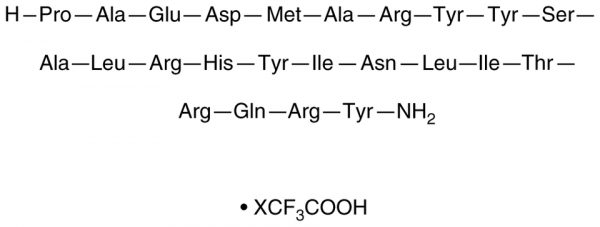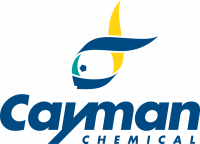Cookie-Einstellungen
Diese Website benutzt Cookies, die für den technischen Betrieb der Website erforderlich sind und stets gesetzt werden. Andere Cookies, die den Komfort bei Benutzung dieser Website erhöhen, der Direktwerbung dienen oder die Interaktion mit anderen Websites und sozialen Netzwerken vereinfachen sollen, werden nur mit Ihrer Zustimmung gesetzt.
Konfiguration
Technisch erforderlich
Diese Cookies sind für die Grundfunktionen des Shops notwendig.
"Alle Cookies ablehnen" Cookie
"Alle Cookies annehmen" Cookie
Ausgewählter Shop
CSRF-Token
Cookie-Einstellungen
FACT-Finder Tracking
Individuelle Preise
Kundenspezifisches Caching
Session
Währungswechsel
Komfortfunktionen
Diese Cookies werden genutzt um das Einkaufserlebnis noch ansprechender zu gestalten, beispielsweise für die Wiedererkennung des Besuchers.
Facebook-Seite in der rechten Blog - Sidebar anzeigen
Merkzettel
Statistik & Tracking
Endgeräteerkennung
Kauf- und Surfverhalten mit Google Tag Manager
Partnerprogramm

| Artikelnummer | Größe | Datenblatt | Manual | SDB | Lieferzeit | Menge | Preis |
|---|---|---|---|---|---|---|---|
| Cay24714-500 | 500 µg | - |
6 - 10 Werktage* |
181,00 €
|
|||
| Cay24714-1 | 1 mg | - |
6 - 10 Werktage* |
270,00 €
|
Bei Fragen nutzen Sie gerne unser Kontaktformular.
Bestellen Sie auch per E-Mail: info@biomol.com
Größere Menge gewünscht? Bulk-Anfrage
Bestellen Sie auch per E-Mail: info@biomol.com
Größere Menge gewünscht? Bulk-Anfrage
Neuropeptide Y (NPY) (13-36) is a C-terminal fragment of NPY, a neuropeptide involved in... mehr
Produktinformationen "Neuropeptide Y (13-36) (human, rat) (trifluoroacetate salt)"
Neuropeptide Y (NPY) (13-36) is a C-terminal fragment of NPY, a neuropeptide involved in controlling appetite, blood pressure, cardiac contractility, and intestinal secretion. NPY (13-36) is an agonist of the NPY receptor Y2 with Ki values of 1.28 and 2.62 nM for the rat recombinant receptor in CHO cells and in rat jejunal crypt cell membranes, respectively. It inhibits forskolin-induced cAMP accumulation with EC50 values of 300, 2.2, >1,000, and 20 at Y1, Y2, Y4, and Y5 receptors, respectively, in vitro . NPY (13-36) inhibits basal short circuit currents (EC50 = ~2 µM) and electrical field stimulated-secretory responses in isolated rat jejunal mucosa (EC50 = ~200 nM) but does so less potently than NPY (Cay-24716, Cay-15071). NPY (13-36) also reduces the frequency of spontaneous excitatory postsynaptic currents (EPSCs) in the CA3 region of hippocampal slices from wild-type but not Y5 receptor knockout mice.Synonyms: NPY (13-36) (human, rat). Molecular Formula: C134H207N41O36S . XCF3COOH. Formula Weight: 3000.4. Purity: >95%. Formulation: (Request formulation change), A lyophilized powder. Solubility: Water: 1 mg/ml. SMILES: NC([C@@H](NC([C@H](CCCNC(N)=N)NC([C@H](CCC(N)=O)NC([C@H](CCCNC(N)=N)NC([C@@]([C@@H](C)O)([H])NC([C@@]([C@H](CC)C)([H])NC([C@H](CC(C)C)NC([C@H](CC(N)=O)NC([C@@]([C@H](CC)C)([H])NC([C@@H](NC([C@@H](NC([C@H](CCCNC(N)=N)NC([C@H](CC(C)C)NC([C@@H](NC([C@H](CO)NC([C@@H](NC([C@@H](NC([C@H](CCCNC(N)=N)NC([C@@H](NC([C@@H](NC([C@@H](NC([C@H](CCC(O)=O)NC([C@@H](NC([C@@H]1CCCN1[H])=O)C)=O)=O)CC(O)=O)=O)CCSC)=O)C)=O)=O)CC2=CC=C(O)C=C2)=O)CC3=CC=C(O)C=C3)=O)=O)C)=O)=O)=O)CC4=CN=CN4)=O)CC5=CC=C(O)C=C5)=O)=O)=O)=O)=O)=O)=O)=O)=O)CC6=CC=C(O)C=C6)=O.FC(F)(C(O)=O)F. InChi Code: InChI=1S/C134H207N41O36S.C2HF3O2/c1-14-67(7)104(128(209)171-97(60-101(136)183)123(204)165-92(54-66(5)6)125(206)174-105(68(8)15-2)129(210)175-106(72(12)177)130(211)162-86(25-20-51-151-134(144)145)113(194)160-87(42-44-100(135)182)117(198)158-84(23-18-49-149-132(140)141)114(195)163-90(107(137)188)55-73-26-34-78(178)35-27-73)173-126(207)95(58-76-32-40-81(181)41-33-76)168-122(203)96(59-77-62-146-64-152-77)169-116(197)85(24-19-50-150-133(142)143)159-119(200)91(53-65(3)4)164-110(191)71(11)155-127(208)99(63-176)172-121(202)94(57-75-30-38-80(180)39-31-75)167-120(201)93(56-74-28-36-79(179)37-29-74)166-115(196)83(22-17-48-148-131(138)139)156-108(189)70(10)154-112(193)89(46-52-212-13)161-124(205)98(61-103(186)187)170-118(199)88(43-45-102(184)185)157-109(190)69(9)153-111(192)82-21-16-47-147-82,3-2(4,5)1(6)7/h26-41,62,64-72,82-99,104-106,147,176-181H,14-25,42-61,63H2,1-13H3,(H2,135,182)(H2,136,183)(H2,137,188)(H,146,152)(H,153,192)(H,154,193)(H,155,208)(H,156,189)(H,157,190)(H,158,198)(H,159,200)(H,160,194)(H,161,205)(H,162,211)(H,163,195)(H,164,191)(H,165,204)(H,166,196)(H,167,201)(H,168,203)(H,169,197)(H,170,199)(H,171,209)(H,172,202)(H,173,207)(H,174,206)(H,175,210)(H,184,185)(H,186,187)(H4,138,139,148)(H4,140,141,149)(H4,142,143,150)(H4,144,145,151),(H,6,7)/t67-,68-,69-,70-,71-,72+,82-,83-,84-,85-,86-,87-,88-,89-,90-,91-,92-,93-,94-,95-,96-,97-,98-,99-,104-,105-,106-,/m0./s1. InChi Key: PETNCVXBGUWTOI-YGXZWFBYSA-N.
| Schlagworte: | NPY (13-36) (human, rat) |
| Hersteller: | Cayman Chemical |
| Hersteller-Nr: | 24714 |
Eigenschaften
| Anwendung: | Neuropeptide fragment |
| Konjugat: | No |
| MW: | 3000.4 D |
| Formel: | C134H207N41O36S . XCF3COOH |
| Reinheit: | >95% |
| Format: | Solid |
Datenbank Information
| KEGG ID : | K05232 | Passende Produkte |
| UniProt ID : | P01303 | Passende Produkte |
| Gene ID | GeneID 4852 | Passende Produkte |
Handhabung & Sicherheit
| Lagerung: | -20°C |
| Versand: | +20°C (International: -20°C) |
Achtung
Nur für Forschungszwecke und Laboruntersuchungen: Nicht für die Anwendung im oder am Menschen!
Nur für Forschungszwecke und Laboruntersuchungen: Nicht für die Anwendung im oder am Menschen!
Hier folgen Informationen zur Produktreferenz.
mehr
Hier kriegen Sie ein Zertifikat
Loggen Sie sich ein oder registrieren Sie sich, um Analysenzertifikate anzufordern.
Bewertungen lesen, schreiben und diskutieren... mehr
Kundenbewertungen für "Neuropeptide Y (13-36) (human, rat) (trifluoroacetate salt)"
Bewertung schreiben
Loggen Sie sich ein oder registrieren Sie sich, um eine Produktbewertung abzugeben.
Zuletzt angesehen






